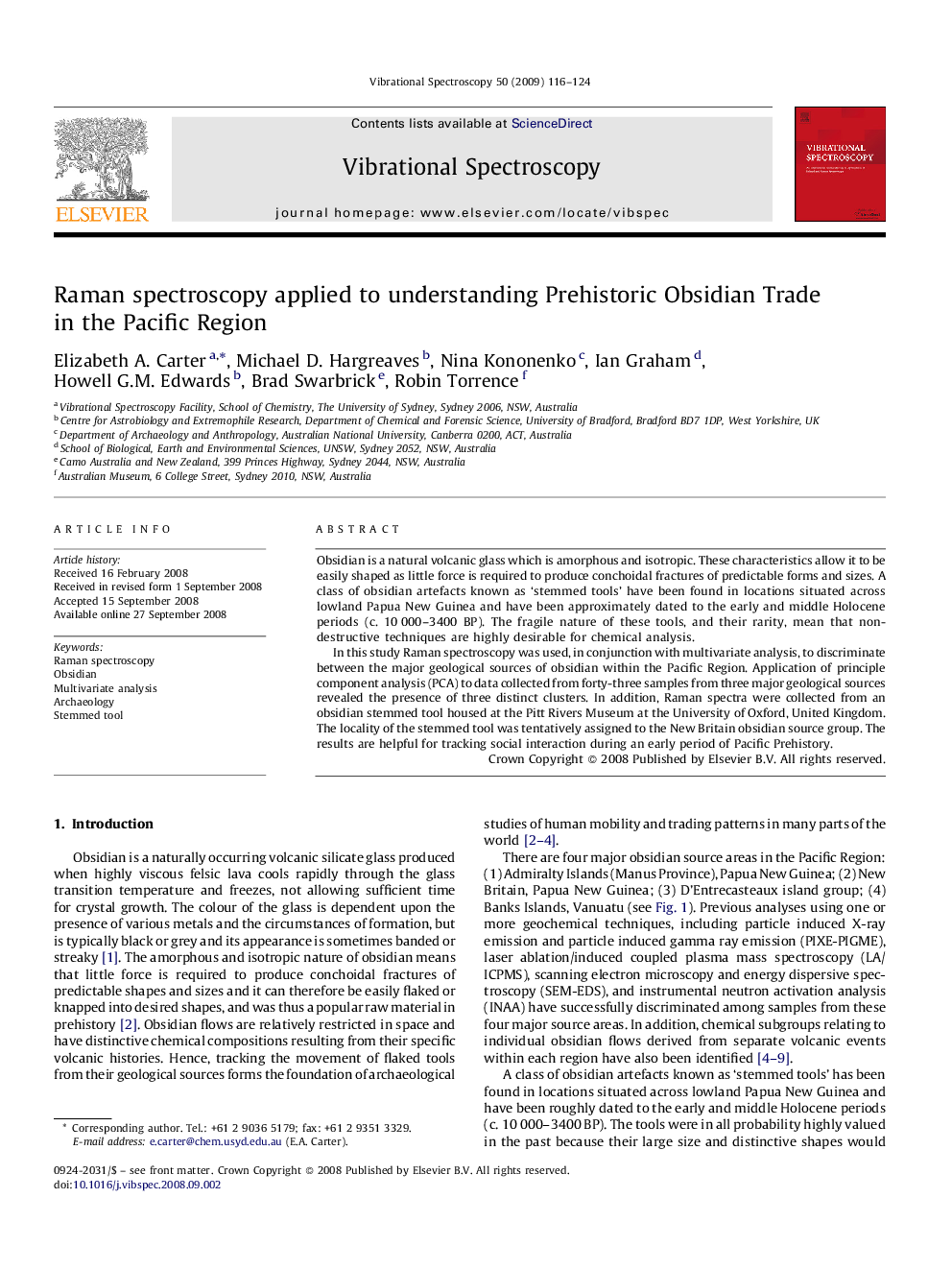| Article ID | Journal | Published Year | Pages | File Type |
|---|---|---|---|---|
| 1250783 | Vibrational Spectroscopy | 2009 | 9 Pages |
Obsidian is a natural volcanic glass which is amorphous and isotropic. These characteristics allow it to be easily shaped as little force is required to produce conchoidal fractures of predictable forms and sizes. A class of obsidian artefacts known as ‘stemmed tools’ have been found in locations situated across lowland Papua New Guinea and have been approximately dated to the early and middle Holocene periods (c. 10 000–3400 BP). The fragile nature of these tools, and their rarity, mean that non-destructive techniques are highly desirable for chemical analysis.In this study Raman spectroscopy was used, in conjunction with multivariate analysis, to discriminate between the major geological sources of obsidian within the Pacific Region. Application of principle component analysis (PCA) to data collected from forty-three samples from three major geological sources revealed the presence of three distinct clusters. In addition, Raman spectra were collected from an obsidian stemmed tool housed at the Pitt Rivers Museum at the University of Oxford, United Kingdom. The locality of the stemmed tool was tentatively assigned to the New Britain obsidian source group. The results are helpful for tracking social interaction during an early period of Pacific Prehistory.
